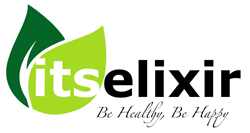
You may have heard of the elusive term PPD in the world of beauty and hair care. If you’ve ever used at-home hair dye, you may have even seen these letters on the packaging, listed among the ingredients. But there are still a few questions that need addressing – starting with the most common: what is PPD in hair dye?
What does PPD stand for in hair dye?
In the context of hair dye, PPD stands for the organic compound para-phenylenediamine. This synthetic substance is one of the most common ingredients in traditional hair dyes, known for its powerful colouring properties.
What is PPD for in hair dye?
PPD is the colouring ingredient used in most oxidative hair dyes, responsible for long-lasting hair colour. Its natural state is a colourless liquid, but when mixed with a dye coupler, it reacts to form a larger dye molecule that fuses to your hair strands by breaking them down.
Where does PPD come from?
Discovered serendipitously in the 1800s by chemist William Henry Perkin, the compound was synthesised during an attempt to create a treatment for malaria.
Its colour was mauve, so it was originally named Mauveine. In its early days, the dye was used in the textile and fabric trade, but soon it was adopted by the hair care and cosmetics industry – and the rest, as they say, is history.
Is PPD harmful?
Now we know what is PPD in hair colour, is it harmful? Despite the fact that round 90% of hair dyes contain some form of PPD, this chemical is one of the leading causes of sensitive scalps and allergic reactions among hair dye users.
In fact, studies on para-phenylenediamine allergy demonstrate that they are on the rise, partly because with increasing usage you can become more sensitised to the adverse effects of PPD. According to the NHS, symptoms of PPD hair dye reactions include itchy, dry, red, painful or swollen skin.
How do I know whether I’m allergic to PPD?
Fortunately, it’s fairly easy to find out whether you’re allergic to PPD. A visit to an allergy clinic will answer this question. Or you could conduct a patch test before using a PPD-based dye.
Things to look out for on the label
While PPD is the most ubiquitous name for the chemical, it’s best to stay aware of its other names. If any of the following appear on the packaging, you’re dealing with a hair dye that contains PPD.
- P-phenylenediamine
- Para-phenylenediamine
- 4-aminoaniline
- 1,4-benzenediamine
- p-diaminobenzene
Protect yourself with a patch test
It doesn’t matter whether you’re using a PPD-based dye kit or a completely natural alternative, you should always conduct a patch test beforehand. This means dabbing a little of the mixture above your ear or inner elbow. If you sense a reaction, tingly sensation or numbness wash it away immediately.
Alternatives to PPD
It’s not all doom and gloom though! PPD-free hair dye alternatives and hypoallergenic hair care is a rapidly growing market.
There is a myriad of hypoallergenic hair dyes, shampoos and conditioners for sensitive scalps, formulated to repair damaged follicles and prevent allergic reactions. Predominantly plant-based, they do a great job of rejuvenating hair damaged by PPD-based hair products.
Why we use henna
itselixir champion the plant-fuelled power of henna hair products and are proud to take the ancient history of henna into the modern day. Henna is the perfect solution for people looking for beard or hair dye for sensitive skin, fighting impurities and injecting a new lease of life into your locks.
Stay healthy, stay beautiful
Although PPD in hair dye is regulated across Europe, the best way to keep your tresses happy and healthy is to ditch the chemicals for more natural options. Try an organic alternative and release your hair’s inner shine.

